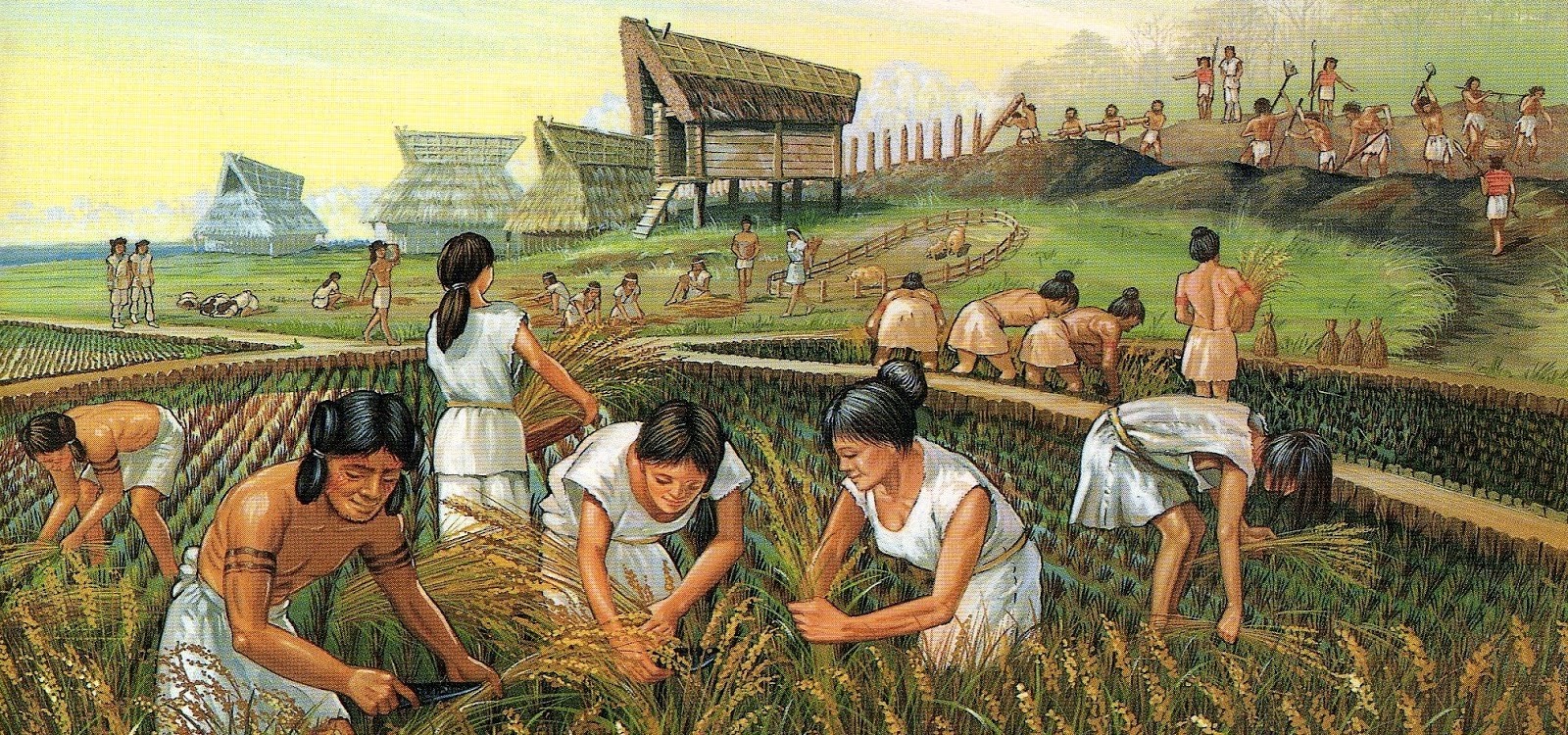
21 Jun Using knowledge in genomics for agricultural research
Debora Santo
Research Assistant, BioSense Institute
During the Origin of Agriculture or the Neolithic Revolution (around 10.000-30.000 years ago), humans have grown into a tight relationship with the plants they grew for food. Forming settlements that relied increasingly more on stable plant-based food sources has shown to be more successful than the earlier hunter-gatherer lifestyle. Early farmers (see Fig. 1) would choose seeds of wild plants around them and grew them in their farms for food or other products. By observing how the plants grew, looked like and tasted, farmers would save seeds from plants they thought performed best and sow them in the next season. This type of selection was based only on the observable traits of the plants, which together make up the plant’s phenotype. The anthropogenic selection acted together with natural selection to direct the evolution of the domesticated plants differently than their wild relatives. Human farming led to a spread and local adaptations of these plants, developing into more distinct local accessions. During the process, several new traits arose in domesticated crops due to new mutations and human-directed selection – they were coined by Harlan in 1971 as the adaptation or domestication syndrome.

Figure 1. Early farmers
(source: http://the-origins-of-agriculture.blogspot.com/2014/04/facts-about-agricultural-revolution.html)
For a long time, we haven’t known much about what and how traits are inherited, until Gregor Mendel (1822-1884) began his experiments on peas at the monastery where he was a friar. For his work, he is considered the father of genetics, especially plant genetics. By observing which characters appeared at which frequencies in the progeny of parental plants with opposingly different traits (see Fig. 2), he drew conclusions to create the first laws of inheritance. These laws are still at the core of today’s genetics for traits with simpler models of inheritance. Only later, a sequence of discoveries has led to the knowledge that DNA was the molecule that carried the code within each cell which dictates the development and phenotype of all plants and most living beings. All the DNA within the cell makes up the genome, or the genotype, which is the genetic constitution of the individual organism.

Figure 2. Pea plant traits studied by Mendel (source: https://slideplayer.com/slide/5962714/, modified)
In the late 1900’s, the Green Revolution lead to the transition from traditional to modern agriculture. At that time, high-yielding elite cultivars were selected and started to be grown on larger fields under monoculture with intensified mechanization. Although this helped solve the urgent need to feed more people, it has additionally reduced the genetic variability in many of our crops, making them more uniform and potentially vulnerable to disease and with less potential to adaptation to environmental stresses.
Nowadays, most medium to large farmers rely on seeds of varieties and hybrids developed by seed companies, that are constantly being tested and developed for better properties using modern breeding methods that increasingly rely on knowledge from genetics and genomics. The focus of agricultural scientists in both academia and industry is aimed at several interconnected research efforts to provide us additional knowledge of how plant genotypes govern their final phenotypes. This should aid better-informed and more efficient selection and improvement that will provide a good choice of seeds for farmers that are the pillar for feeding the world population.
The core genomics research aims include improving our understanding of location, function, expression and interaction between genes for certain traits of interest (yield, biotic or abiotic stress resistance, nutritional quality…), as well as overall genomic architecture, to pinpoint causes for certain phenotypes occurring due to the genomic variation we observe. We also seek to assess the genetic variability within wild relatives, landraces and elite crop cultivars, to know the extent of diversity in genetic variants for our target traits that can be found in the naturally occurring diversity. We can use this knowledge to improve traits like yield or resistance to specific pathogens or abiotic stresses (like drought) by introducing exotic variability into high-yielding elite cultivars, to make them more resilient while maintaining high yields. We are learning more about the heritability of traits and to which extent they can be influenced by different environmental factors through genotype-by-environment studies that examine to which extent individuals of the same genotype can differ under different environmental conditions. Lastly, we must continue to further develop genomics tools as solutions to specific research problems in agriculture, as diverse crops and research questions demand specifically optimized approaches.





















